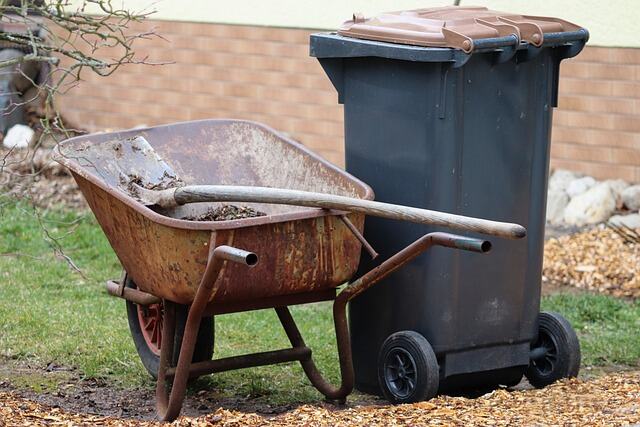
Gardening is a rewarding endeavor that brings joy and beauty to your outdoor space. To ensure the longevity and efficiency of your gardening tools, proper cleaning and maintenance are essential. In this comprehensive guide, we will explore simple yet effective ways to clean and maintain your garden tools. From hand pruners to shovels, understanding the basics of tool care not only extends their lifespan but also enhances your gardening experience. Let’s dive into the world of soil-stained trowels and sun-kissed shears with practical tips for keeping your garden tools in top shape.
The Importance of Cleaning Garden Tools
Preventing the Spread of Diseases:
Dirty tools can harbor plant pathogens. Cleaning prevents the spread of diseases between plants.
Ensuring Efficient Performance:
Clean tools work more efficiently. Removing soil and debris allows for smoother cutting and digging.
Prolonging Tool Lifespan:
Regular cleaning prevents rust and corrosion, extending the life of your cherished garden tools.
Basic Cleaning Techniques for Common Garden Tools
Hand Pruners and Shears:
Wipe blades with a cloth soaked in rubbing alcohol to disinfect. Remove sap with a mixture of warm water and mild dish soap.
Shovels and Spades:
Scrape off soil with a putty knife or wire brush. Use a hose to wash away remaining debris. Dry thoroughly to prevent rust.
Rakes and Hoes:
Remove debris with a stiff brush or hose. For stubborn residue, soak the tool in a bucket of soapy water and scrub.
Trowels and Hand Forks:
Scrub with a wire brush to remove soil. Soak in a bucket of soapy water, then rinse and dry.
Rust RemovalTechnique
Vinegar Soak:
Submerge rusted parts in white vinegar for a few hours. Scrub with a wire brush, rinse, and dry.
Baking Soda Paste:
Create a paste with baking soda and water. Apply to rusted areas, let it sit, and scrub with a brush.
Sandpaper Treatment:
For stubborn rust, sand the affected areas using fine-grit sandpaper. Finish with a protective coat of oil.
Tips for Sharpening Blades
Use a File for Pruners:
Sharpen pruner blades with a flat file. Follow the natural bevel of the blade for optimal sharpness.
Sharpening Stones for Edged Tools:
Use sharpening stones for tools like shovels and hoes. Maintain the original bevel while sharpening.
Dremel Tool for Precision:
A Dremel tool with a sharpening attachment is excellent for detailed work on smaller blades.
Oil and LubricationTechnique
Preventive Oil Coating:
Apply a thin layer of vegetable oil or motor oil to metal parts after cleaning. Wipe off excess to avoid attracting dirt.
Hinge Lubrication:
For tools with moving parts, lubricate hinges and joints with a silicone-based lubricant.
Keep Wooden Handles Moisturized:
Wooden handles benefit from occasional oiling. Use linseed oil or a dedicated wood preservative.
Tips for Wooden Handle Care
Cleaning Dirt and Stains:
Wipe wooden handles with a damp cloth to remove dirt. For stains, use a mixture of water and mild soap.
Sanding for Smoothness:
Sand rough areas on wooden handles for a smoother finish. Finish with a coat of linseed oil.
Storage Considerations:
Store tools in a dry area to prevent wooden handles from warping. Hang them to keep handles off the ground.
Storage Solutions
Tool Rack or Pegboard:
Install a tool rack or pegboard to keep tools organized and easily accessible.
Bucket of Sand and Oil:
Create a storage solution by filling a bucket with sand and adding motor oil. Insert tools to keep blades lubricated.
Tool Shed or Box:
A dedicated tool shed or box protects tools from the elements. Ensure proper ventilation to prevent moisture buildup.
Gloves and Safety Measures
Wear Protective Gloves:
Gardening gloves not only protect your hands but also keep oils and dirt from accumulating on tool handles.
Clean After Each Use:
After gardening, take a few minutes to clean and store your tools. This prevents soil from drying onto the surfaces.
Regular Tool Checks:
Inspect tools for damage or wear regularly. Replace parts or tools that show signs of significant wear.
Tips and Tricks for Removing Sap and Resin
Use Cooking Oil:
Apply cooking oil to sticky residues like sap. Let it sit for a few minutes, then wipe away the softened sap.
Rubbing Alcohol for Quick Cleaning:
Soak a cloth in rubbing alcohol and rub over sticky areas. Wipe clean with a dry cloth.
Avoid Harsh Solvents:
Steer clear of harsh solvents as they can damage tool surfaces and compromise their integrity.
Regular Inspections
Check for Loose Parts:
Inspect tools for loose screws or bolts. Tighten any parts that may have become loose during use.
Handle Integrity:
Regularly check the integrity of wooden handles. Replace handles showing signs of cracks or weakening.
Blade Alignment:
Ensure that blades are properly aligned. Misaligned blades can cause inefficient cutting and potential safety hazards.
Conclusion
In conclusion, maintaining and cleaning your garden tools is a simple yet crucial aspect of successful gardening. By incorporating these straightforward tips into your routine, you not only ensure the longevity of your tools but also create a more efficient and enjoyable gardening experience. So, roll up your sleeves, grab your trowel, and let your well-maintained garden tools be your companions in creating a thriving and beautiful garden. Happy gardening!







